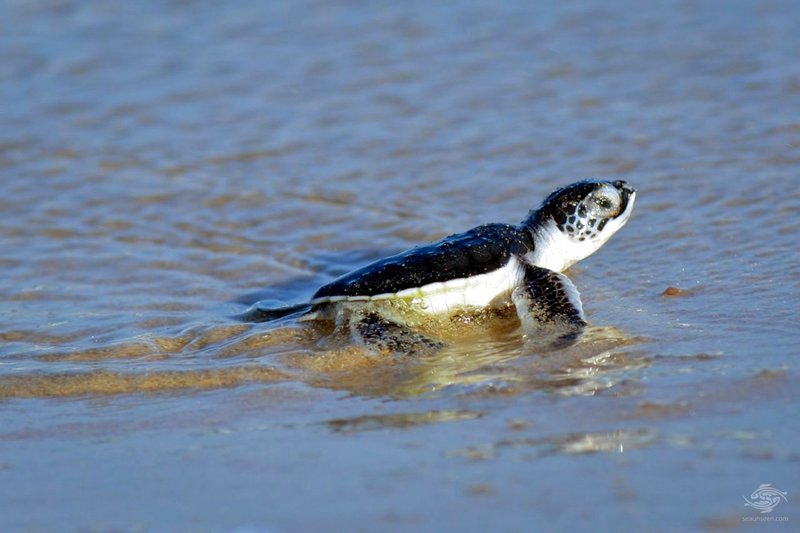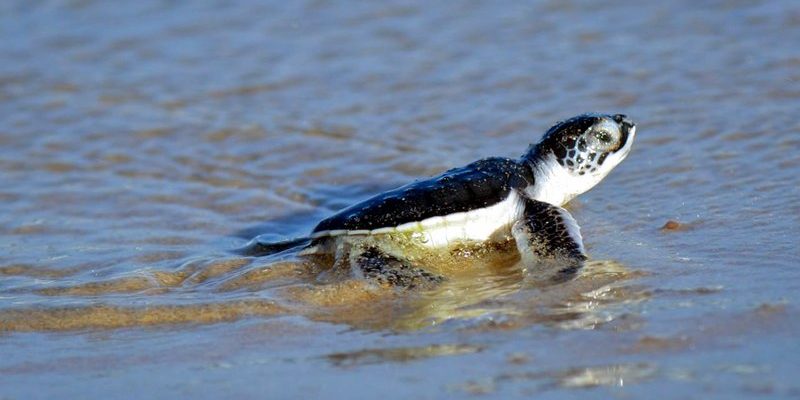
As we sip our coffee and dive deeper into this topic, it’s important to understand that the evolutionary path of the hawksbill turtle spans millions of years. Think of it like a long movie, filled with twists and turns, where each scene adds depth to the story. From their ancient relatives swimming in prehistoric oceans to the challenges they face today, the hawksbill turtle’s journey is nothing short of remarkable.
Origins of the Hawksbill Turtle
The hawksbill turtle belongs to the family Cheloniidae, which includes several species of sea turtles. Its ancestors roamed the oceans over 100 million years ago during the Cretaceous period. Just picture a time when giant dinosaurs walked the earth and the seas were filled with strange and wonderful creatures. Hawksbill turtles evolved from land-dwelling reptiles that adapted to life in the water.
The fossil record helps us understand how these turtles transitioned from land to sea. Over millions of years, they developed streamlined bodies and flippers, making them agile swimmers. The hawksbill’s distinctive hawk-like beak evolved to help them feed on sponges, which make up a large part of their diet. This specialized beak is a crucial adaptation, allowing them to access food sources that many other turtles cannot reach.
Interestingly, hawksbill turtles are considered a “keystone species.” This means they play a critical role in maintaining the health of coral reefs. By feeding on sponges and other organisms, they help maintain the balance of the reef ecosystem. Without them, the health of these beautiful underwater environments could be compromised, showing just how important these turtles are in their evolutionary role.
Physical Characteristics of the Hawksbill Turtle
Hawksbill turtles are easily recognizable thanks to their unique features. They have a beautifully patterned shell, with hues of orange, brown, and yellow. This coloring isn’t just for show; it provides camouflage within the coral reefs where they live. Being hard to spot helps protect them from predators.
Besides their colorful shells, hawksbills are relatively small when compared to other sea turtles. Adults usually weigh between 100 to 150 pounds, and their shell can reach lengths of about 30 inches. If you saw one swimming by, you’d likely be struck by their graceful movements and agility, especially as they navigate through the crevices of coral reefs.
Their beak shape is another notable characteristic. It’s perfectly designed for their diet, allowing them to pry open the hard shells of sponges and other prey. Honestly, if you think about it, their entire body is like a finely-tuned instrument, evolved over millions of years to thrive in a specific niche of the ocean.
Habitat and Distribution
Hawksbill turtles are primarily found in tropical and subtropical waters around the world. They tend to prefer shallow coastal areas with plenty of coral reefs, as these environments provide abundant food and shelter. Think of these reefs as bustling underwater cities, full of life and opportunities for hawksbills to explore.
Some of the key regions where you can find hawksbills include the Caribbean Sea, the Mediterranean, and the waters off the coast of Australia. Each of these locations offers unique habitats that help support hawksbill populations. For instance, the Great Barrier Reef is known for its diverse marine life and serves as a vital feeding ground for these turtles.
However, their distribution is not without challenges. Pollution, climate change, and habitat destruction pose significant threats to hawksbill turtles and their habitats. As ocean temperatures rise and coral reefs suffer from bleaching, the survival of these turtles becomes increasingly precarious. It’s a stark reminder of how interconnected our world is and how the fate of one species can affect many others.
Reproductive Behavior of Hawksbill Turtles
The reproductive life of a hawksbill turtle is quite fascinating. Every few years, adult females return to the same nesting beaches where they were born to lay their eggs. Honestly, it’s like they have a built-in GPS guiding them back home. They dig nests in the sand, laying about 100 to 200 eggs at a time, and then cover them up, leaving them to incubate.
When the hatchlings finally emerge after about two months, they face a treacherous journey just to reach the ocean. Most don’t make it, as they have to dodge predators like birds and crabs. Those that do manage to reach the water will spend the next few years of their lives in the open ocean, a time often referred to as the “lost years.”
During this phase, young hawksbills may stay in floating seaweed beds, where they find food and shelter. This stage can last several years, and eventually, they will return to coastal habitats as they mature. The journey from hatchling to adulthood is full of danger, but it’s a crucial part of their life cycle.
Threats to the Hawksbill Turtle
Despite their beautiful existence, hawksbill turtles face numerous threats that have led to their classification as critically endangered. One major issue is plastic pollution. Turtles often mistake plastic bags for jellyfish, a common food source, which can lead to choking or serious digestive issues. It’s heart-wrenching to think about how our habits can impact these creatures.
Another significant threat is habitat destruction. Coastal development, pollution, and climate change are destroying the coral reefs that hawksbills rely on for food. When reefs deteriorate, so do the turtles’ chances of survival. Moreover, illegal poaching for their shells, which are prized for jewelry and decorative items, has also drastically reduced their populations.
Conservation efforts are underway to protect hawksbill turtles, focusing on habitat restoration and anti-poaching measures. Organizations around the world are working tirelessly to safeguard these turtles and their nesting sites. You could say it’s a race against time, and every little action counts in helping to secure a future for them.
Conservation Efforts and Future Perspectives
As we come to the end of our exploration, it’s clear that hawksbill turtles need our help. Conservation efforts are crucial for ensuring their survival. Many countries have established marine protected areas (MPAs) where fishing and coastal development are restricted. These steps allow marine life, including hawksbills, to thrive without the pressures of human activity.
Another important part of the conservation strategy is awareness and education. By teaching people about the importance of hawksbill turtles and the threats they face, we can inspire action. For example, simple things like reducing plastic use, participating in beach cleanups, and supporting sustainable seafood choices can make a big difference.
We must remember that every creature in the ocean, including the hawksbill turtle, plays a role in maintaining the balance of marine ecosystems. So, the next time you see one of these turtles or hear about them, think of the beautiful evolutionary journey they’ve taken and the importance of protecting their future. Together, we can help ensure that hawksbill turtles continue to grace our oceans for generations to come.

